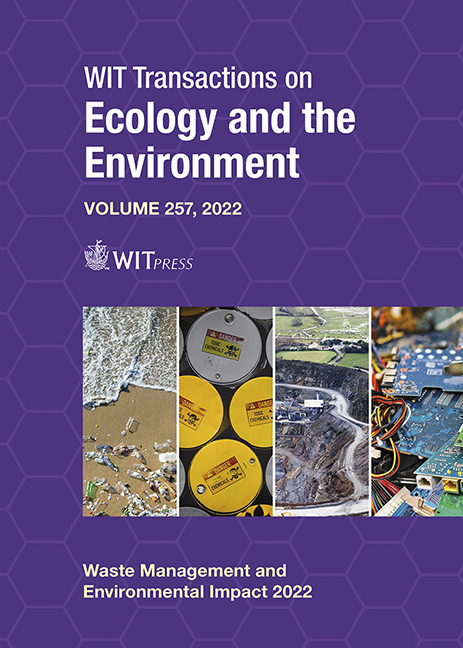RECYCLING OF LOW-DENSITY POLYETHYLENE WASTE TO PRODUCE ECO-FRIENDLY GYPSUM COMPOSITES
Price
Free (open access)
Transaction
Volume
257
Pages
9
Page Range
73 - 81
Published
2022
Paper DOI
10.2495/WMEI220071
Copyright
Author(s)
MARÍA I. ROMERO-GÓMEZ, PALOMA RUBIO-DE-HITA, MANUEL A. PEDREÑO-ROJAS, MARÍA J. MORALES-CONDE, FILOMENA PÉREZ-GÁLVEZ
Abstract
Over 367 million metric tons of plastic were produced worldwide in 2020. Within the most consumed standard plastics, low-density polyethylene (LDPE) is the second resin most demanded in Europe. Far from reducing its consumption, this continues to grow despite environmental impact. Due to the low recycling rate of LDPE waste (~35%), coming mainly from post-consumer packaging and lightweight bags, most parts of this waste end up in the environment. As an alternative to restrained governmental steps, i.e. extra taxes to reduce single-use plastic consumption, new solutions for the recycling and reuse of plastic waste are being developing from different economic sectors. Because of the worldwide significance of the construction sector, which has a large consumption of natural resources and production of waste, this sector plays a critical role within the new models of circular economy. In light of this, and committed to the sustainable development goals adopted by the United Nations, the present work intends to determine the feasibility of using LDPE waste sourced from plastic bags to produce eco-friendly gypsum-based composites. Four replacement levels of plastic waste were chosen for analysis – 0.25%, 0.5%, 1%, 5% by weight of gypsum. The experimental campaign consisted of analysing the resulting compounds based on density, mechanical behaviour (flexural and compressive strength), as well as evaluating their water absorption by capillary action and adsorption by exposing them to continuous moisture. Comparing this to the control material, lighter composites with a decrease of mechanical strength were obtained. However, all the values of flexural and compressive strength exceeded the minimums established by standard. Also, the LDPE-containing composites presented lower water absorption and adsorption capacity (up to ~50% when compared to the control material). So it could be inferred that the waste material can be considered as a viable partial substitute to the current commercial gypsum for the manufacturing of gypsum products, i.e. plasterboards.
Keywords
LDPE waste, gypsum plaster, mechanical properties, water-resistance properties, eco-friendly material




